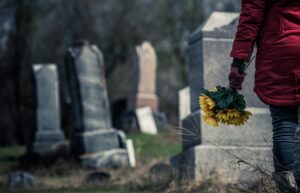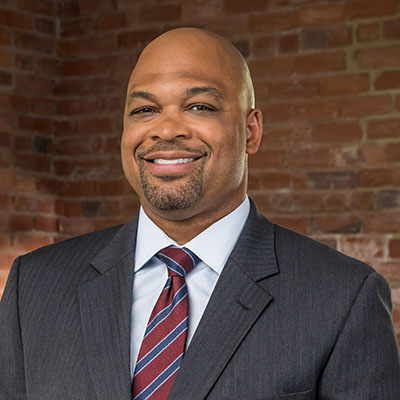As a former criminal prosecutor who has entered the civil world to represent plaintiffs in personal injury cases, I find the crossover between civil and criminal cases fascinating.
For example, in both case types, the role of the attorney is to hold people (defendants) accountable for their actions. A criminal prosecutor has the burden of introducing evidence on behalf of the state. They must prove a defendant’s guilt beyond a reasonable doubt in order for them to be found guilty.

O.J. Simpson trial Photo credit: ABC News
What is a preponderance of the evidence?
Similarly, my job as a plaintiff’s attorney is to introduce evidence on behalf of my client that proves that the defendant is liable by a preponderance of the evidence. A preponderance of the evidence is a less-rigid standard than evidence that proves something beyond a reasonable doubt. It simply means to prove that something is more likely to have happened than not.
Another similarity in civil and criminal cases is that the defendants have no obligation to prove their innocence in a court of law.
Popular cases with civil and criminal crossovers
The O.J. Simpson trial
What are some popular cases that have both a criminal and civil crossover? The most notable one is probably the O.J. Simpson case.
If you recall (and of course you do), in 1995, O.J. Simpson was acquitted of the murders of both his ex-wife, Nicole Brown Simpson, and Ron Goldman. However, in 1997, a civil jury found Simpson liable for the wrongful death in the double murder. They ordered him to pay $33.5 million in damages to their families.

Conrad Roy and Michelle Carter Photo credit: NBC Boston
The Commonwealth vs. Michelle Carter
One that I think ranks among the most interesting is the case of the Commonwealth v. Michelle Carter, 481 Mass. 352 (2019). There have been a couple of TV series that covered the case. One aired on HBO, I Love You, Now Die: The Commonwealth v. Michelle Carter, and one more recently on Hulu, The Girl from Plainville.
In that case, Michelle Carter, a minor at the time, was charged with involuntary manslaughter for the suicide of her boyfriend, Conrad Roy. Roy and Carter, both teenagers in Massachusetts, had a long-distance relationship from about 2012 up until Roy’s death in 2014. In July of 2014, Roy drove his truck to a secluded parking lot, where he was found dead the next day. He had attached a hose from a generator to his truck to fill it with carbon monoxide, which poisoned him.
The police discovered Roy’s cell phone after the suicide and saw many texts from Carter. These texts, which encouraged Roy to kill himself, prompted the police to investigate and charge Carter. Ultimately, at her criminal trial in 2017, Carter was found guilty of involuntary manslaughter.
The judge found beyond a reasonable doubt that Carter’s actions and inactions, where she had a self-created duty, constituted wanton and reckless conduct. It was determined that that these actions had caused Roy’s death. Given that she was found responsible for Roy’s death beyond a reasonable doubt, it was almost certain that she be found liable for his wrongful death under a lower standard, a preponderance of the evidence.
Lynn Roy, the mother of the victim, brought a $4.2 million wrongful death suit against Carter shortly after the involuntarily manslaughter conviction. However, in 2019, the civil suit was resolved without further explanation. Most likely, the suit was dismissed based on a settlement that the parties came to privately.

Wickersham vs. Ford Company
Commonwealth v. Carter wasn’t the only case that grappled with the question of whether someone could be responsible for someone else’s suicide. The next case did not have a criminal component, but still raised interesting questions, similar to that in Carter.
In Wickersham v. Ford Motor Company 997 F.3d 526 (2021), the South Carolina Supreme Court answered a question about whether suicide presumptively broke the causal chain following a tort. In that case, pharmacist and consultant John Harley Wickersham made a bad left turn and traveled through an intersection before hitting a tree. The accident resulted in serious injuries, including a broken rib, a broken jaw, broken cheekbones, a fractured skull, and a ruptured left eye.
He ultimately lost his eye and damaged the trigeminal nerve, which was excruciatingly painful. Given the pain medications he was using, he was not able to work as a pharmacist. About 18 months after the accident, he committed suicide. His estate sued Ford under a crashworthiness theory of liability. Crashworthiness cases, also referred to as auto defect claims, are cases in which a vehicle, because of its unsafe design or the absence of necessary safety features, fails to adequately protect the occupants from injury in foreseeable crashes.
The suit from Wickersham’s estate alleged that the airbag deployed too slowly, resulting in enhanced injuries. The theory was that the defective airbag caused the injuries that ultimately caused the suicide.
Ford moved for summary judgment, arguing in relevant part that the company was not liable for Wickersham’s wrongful death action. They argued that any defective design could not be the proximate cause of Wickersham’s death by suicide under South Carolina law. The case was not cut and dry, and there were many appeals involved, but ultimately there was a multi-million dollar awarded in the wrongful death action. Wickersham’s estate won the case.

Wrongful death laws in Virginia
Now, I don’t know how these cases would end up in Virginia, which is a pure contributory negligence state. Contributory negligence is a defense to a tort claim based on negligence. If it is available, the defense completely bars plaintiffs from any recovery if they contribute to their own injury through their own negligence. However, contributory negligence defense is not available to the defendant in a tort lawsuit whose conduct rises above the level of ordinary negligence to intentional or malicious wrongdoing.
It seems that most states have resisted criminalizing the encouragement of suicide. It seems like that in Virginia, at least. But what about a civil action? Is there any civil remedy in Virginia for the mere encouragement of suicide?
In Virginia, the law specifically states that “[a} spouse, parent, child or sibling of a person who commits or attempts to commit suicide may recover compensatory and punitive damages in a civil action from any person who provided the physical means for the suicide or attempted suicide or who participated in a physical act by which the other person committed or attempted to commit suicide.” This language would seem to preclude virtual or digital acts like the one in the Michelle Carter case. This Virginia law specifically mentions “physical means” and “physical act.” See Va. Code Ann. § 8.01-622.1.
What say you, brethren? Do you think the courts out of Massachusetts and South Carolina got it right? Do you think Virginia should change its law to include virtual or digital acts in the increasing age of cyberbullying?




